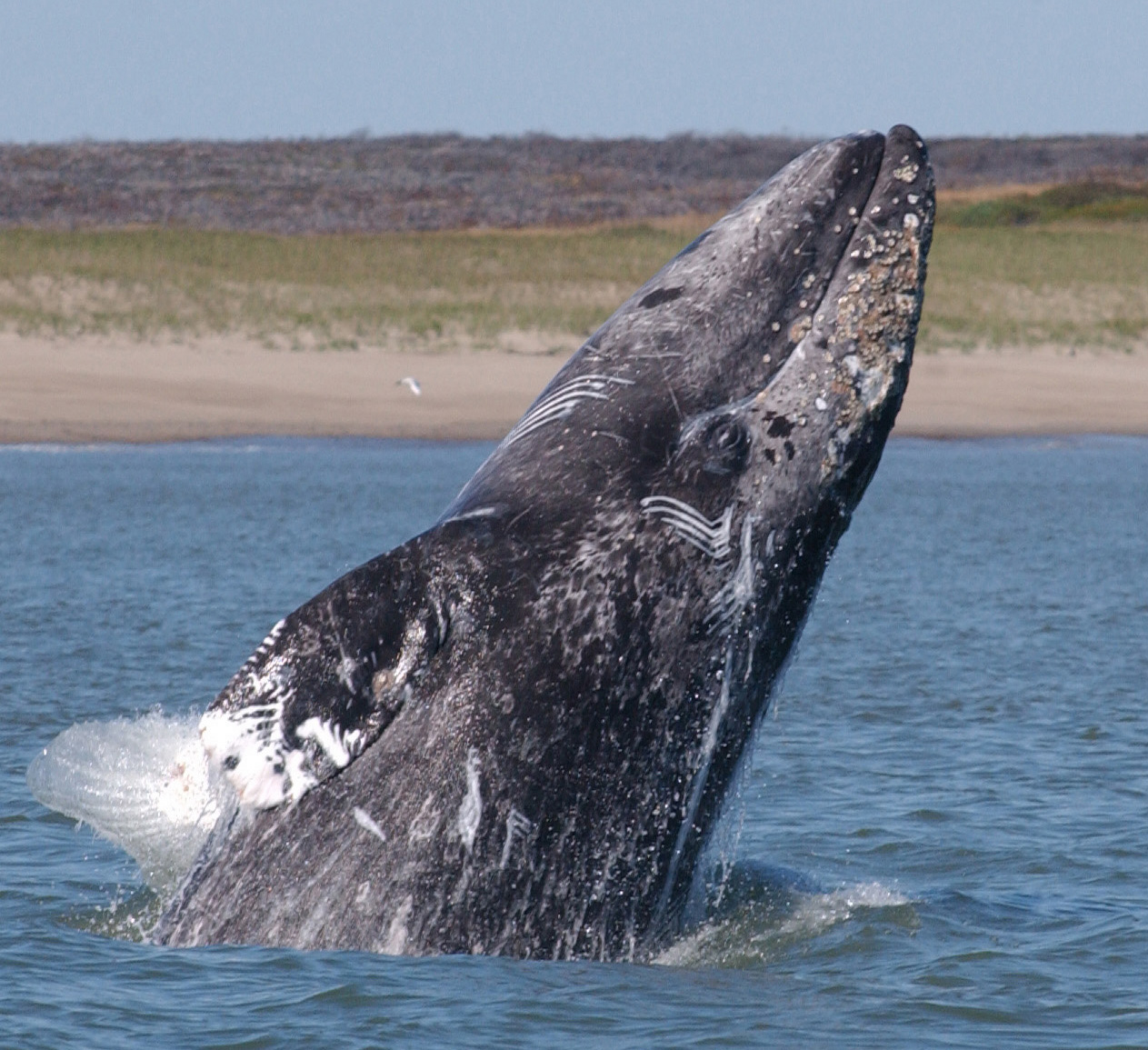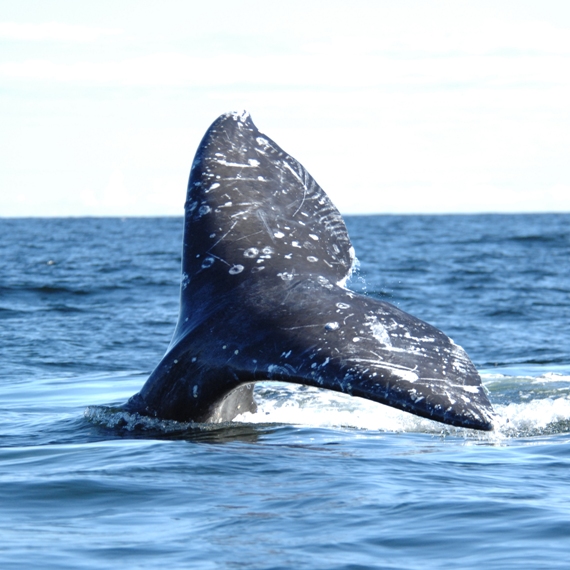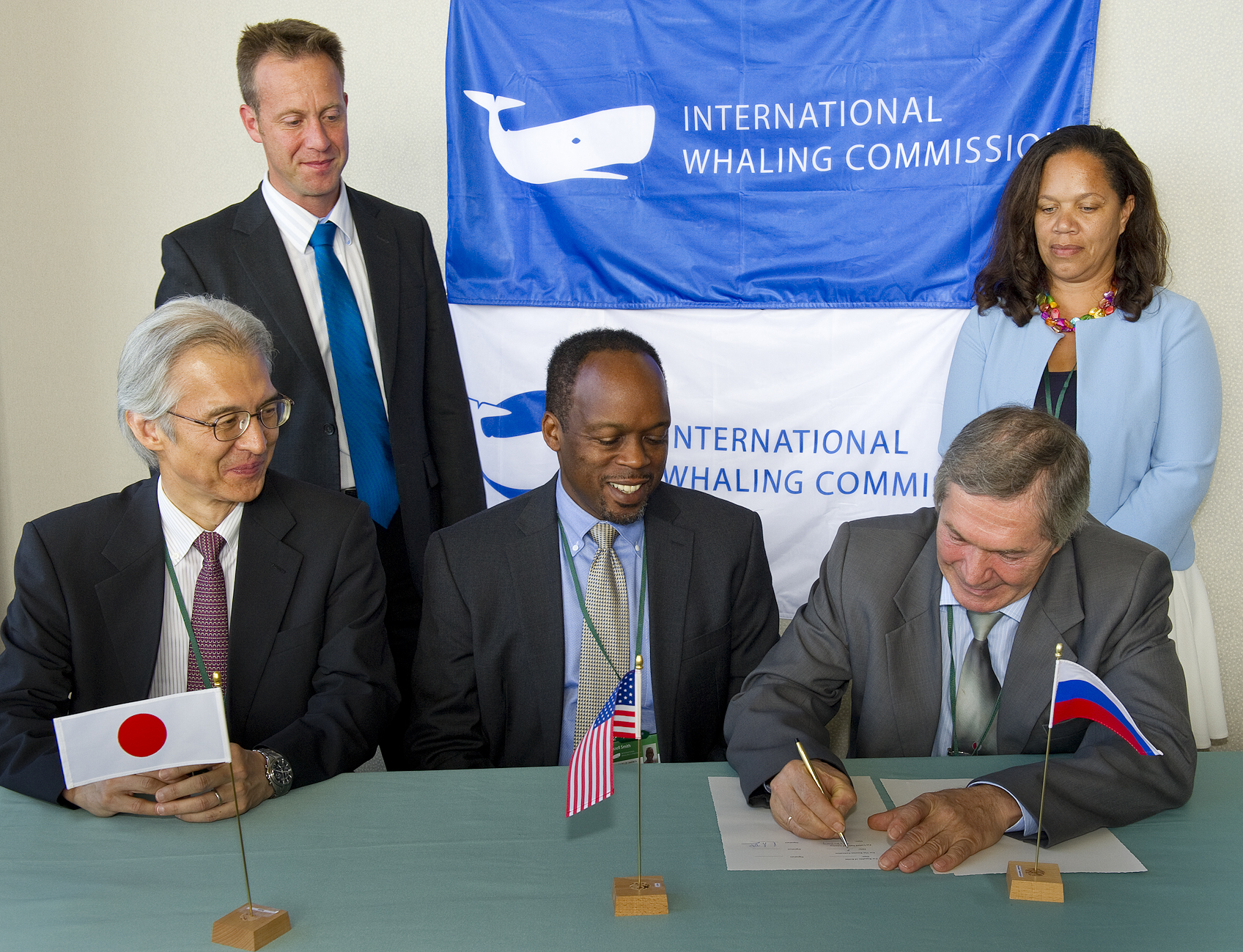Landmark cooperation for conservation of rare whales
Representatives of the Russian Federation, USA and Japan have signed a Memorandum of Understanding (MoU) to implement IUCN’s range-wide Western Gray Whale Conservation Plan.
The genetically-distinct western subpopulation of the Gray Whale (Eschrichtius robustus) is classified as Critically Endangered on the IUCN Red List of Threatened SpeciesTM, numbering only about 125-156 animals in 2010. Over-exploitation was thought to have caused the extinction of western Gray Whales until Soviet scientists in the 1980s reported a small remaining group off Sakhalin Island in eastern Russia. The western Gray Whale population is slowly growing but experts say the death of just one mature female per year could send it back towards extinction.
The IUCN Western Gray Whale Conservation Plan was drafted in 2010 with the goal of ‘managing human activities that affect western Gray Whales and maximising the population’s chances for recovery, based on the best scientific knowledge.’
The western Gray Whale spends its summers in the Okhotsk Sea. Its migration routes and winter breeding grounds are still poorly known but its range includes Russia, Japan, Democratic People’s Republic of Korea, Republic of Korea and the People’s Republic of China.
Although International Whaling Commission (IWC) regulations protect western Gray Whales from commercial and aboriginal subsistence whaling, major threats remain throughout their range. These threats include entrapment in set nets, entanglement in other types of fishing gear, as well as noise pollution and oil spills due to offshore oil and gas development.
The signing of the MoU took place during the recent biennial IWC meeting in Portorož, Slovenia. It is hoped that the other western Gray Whale range states will be able to add their signatures once the required internal consultations have been completed.






